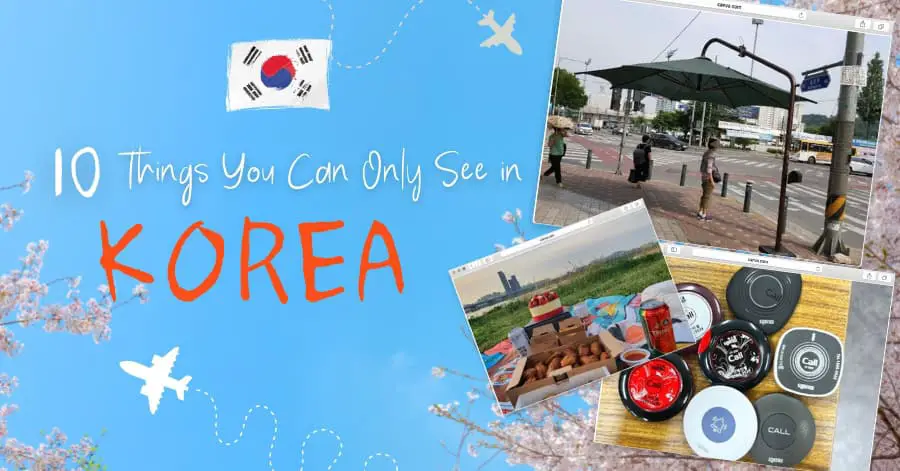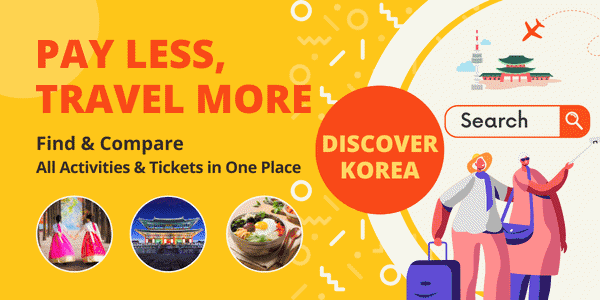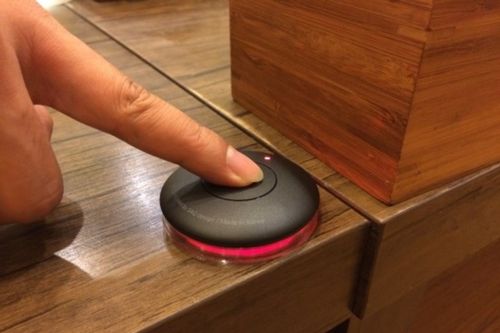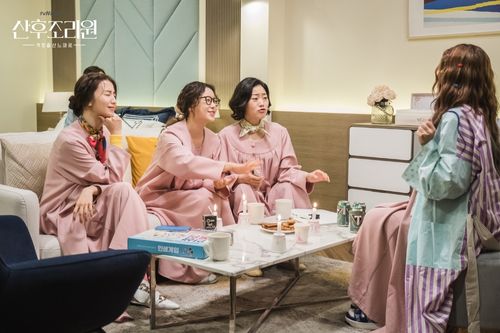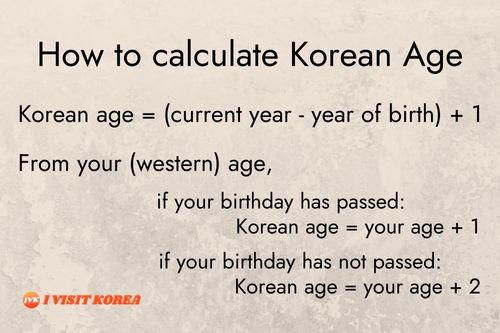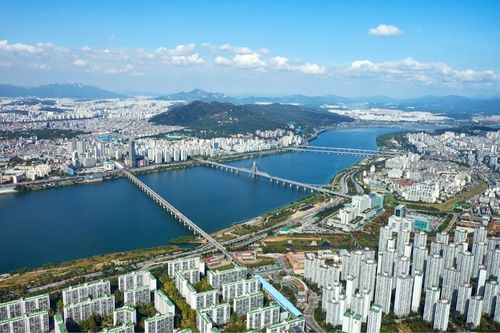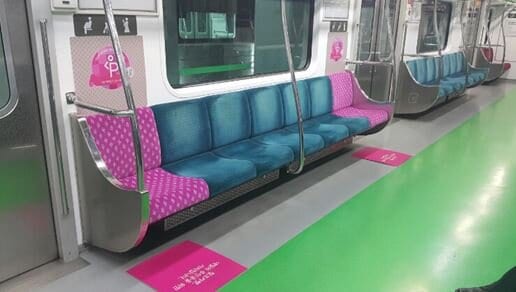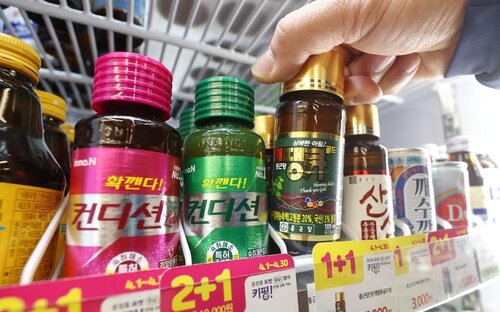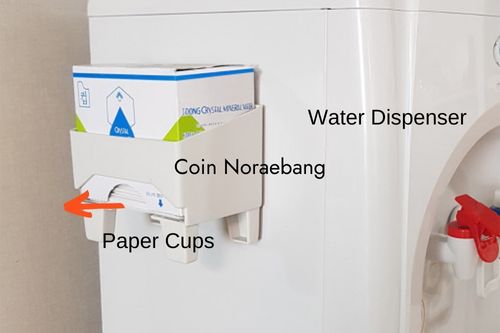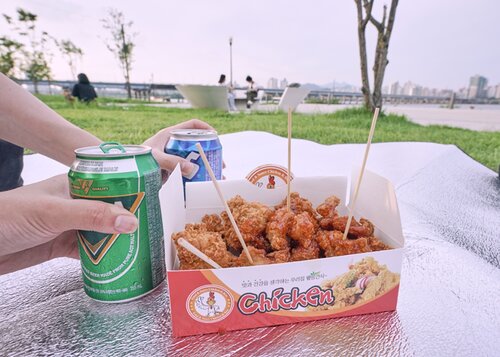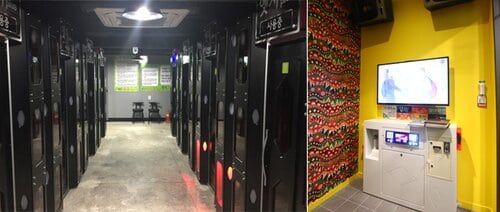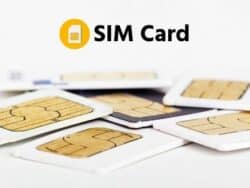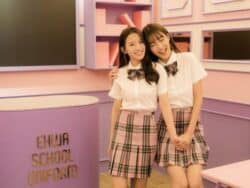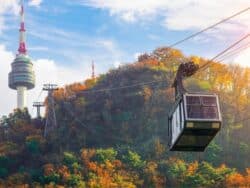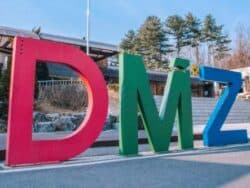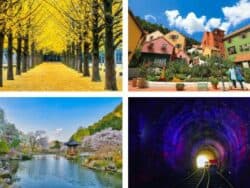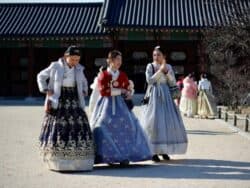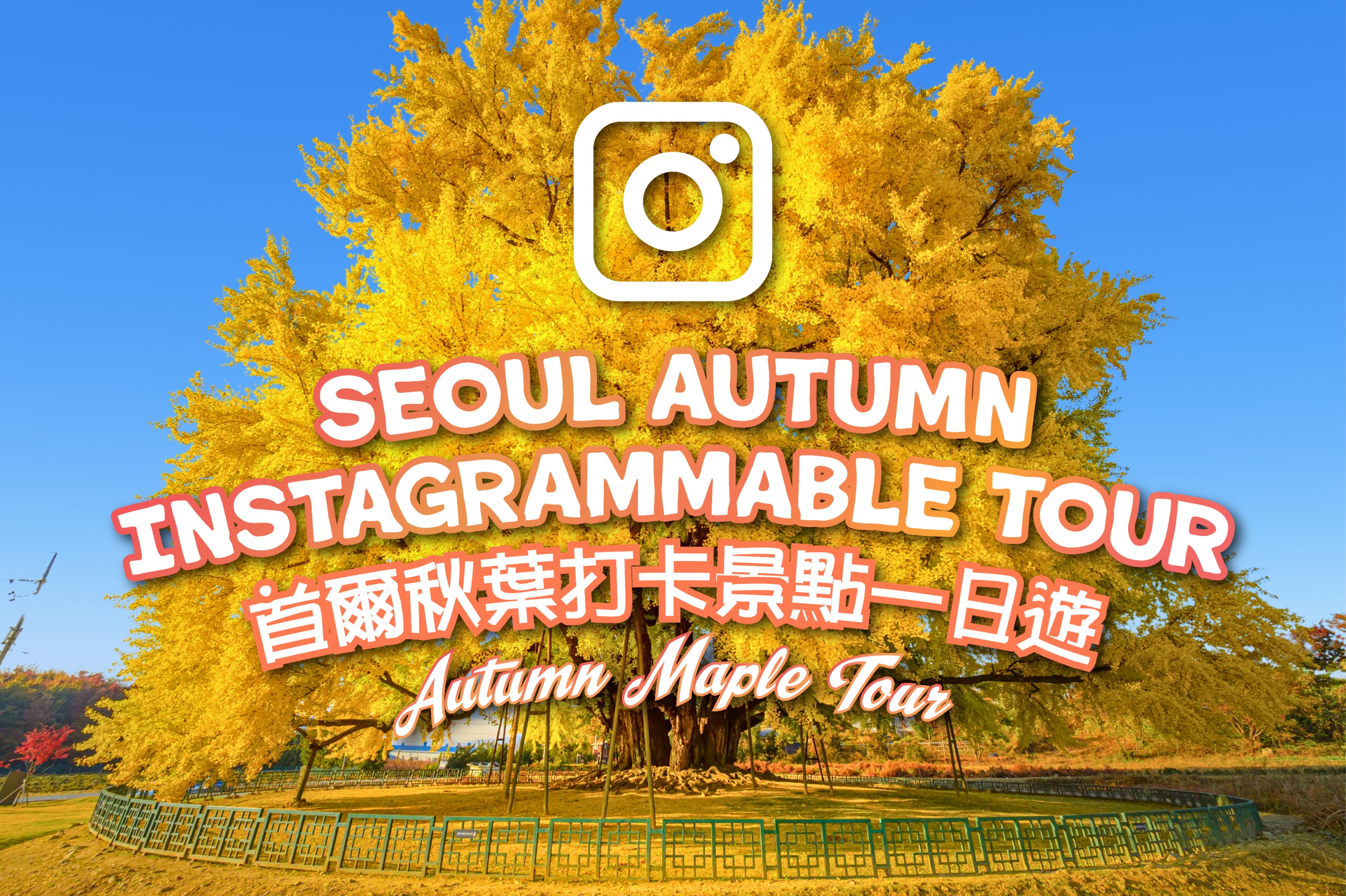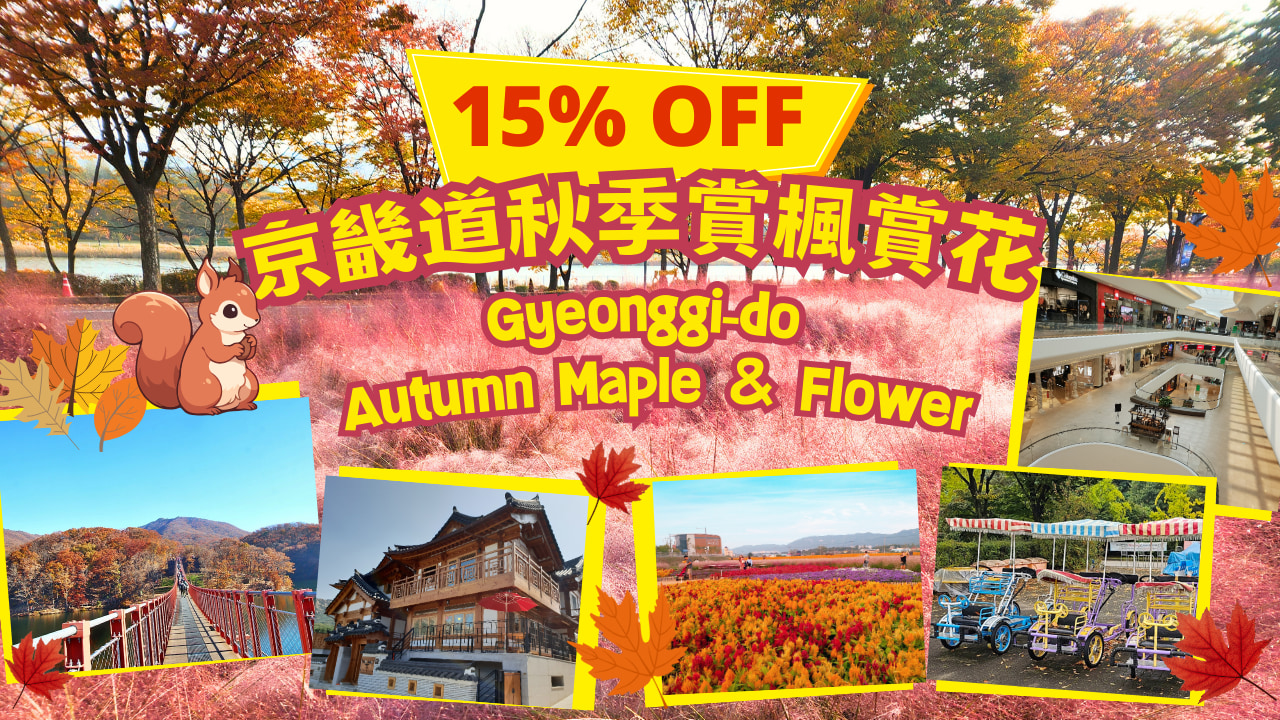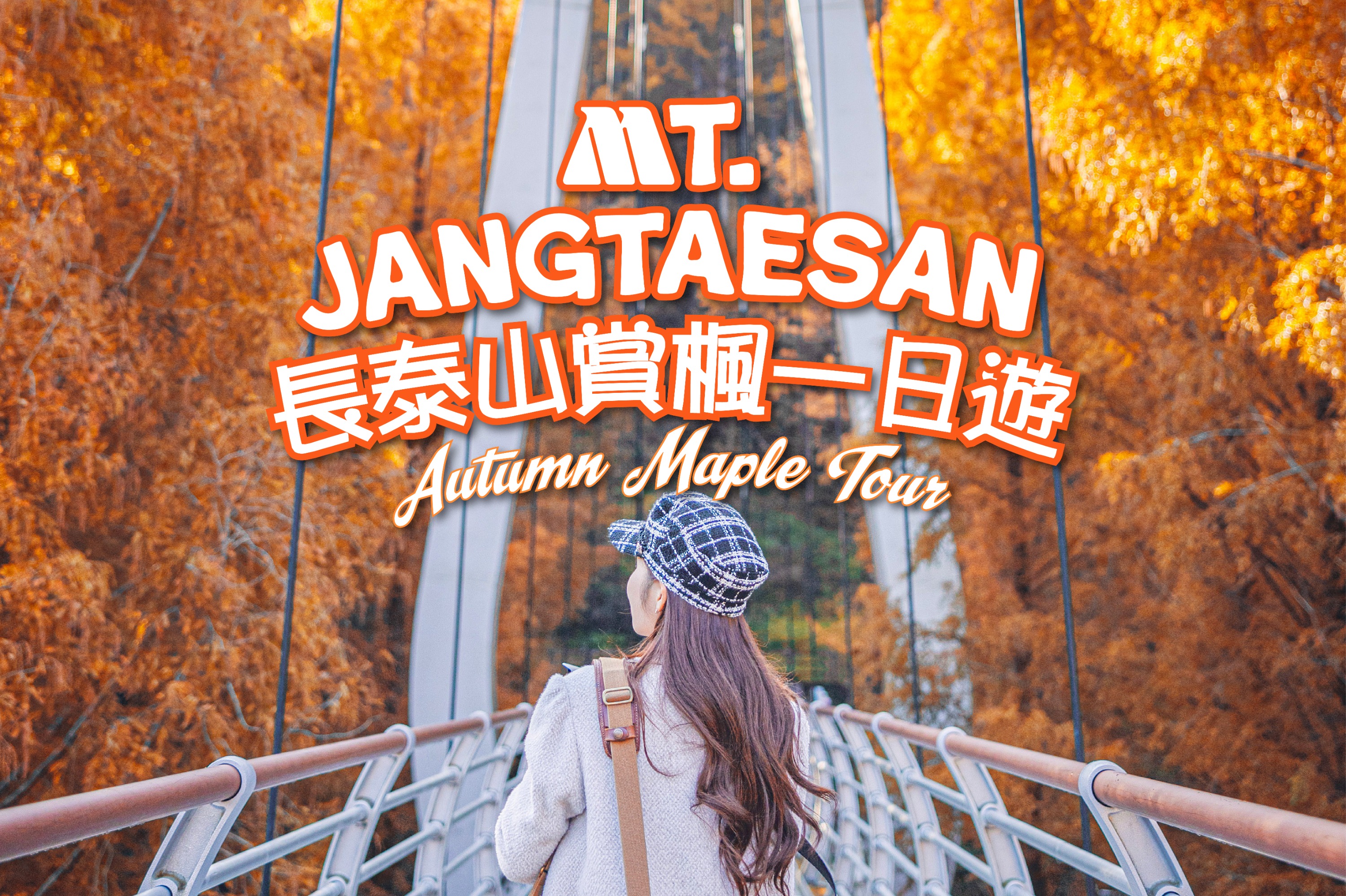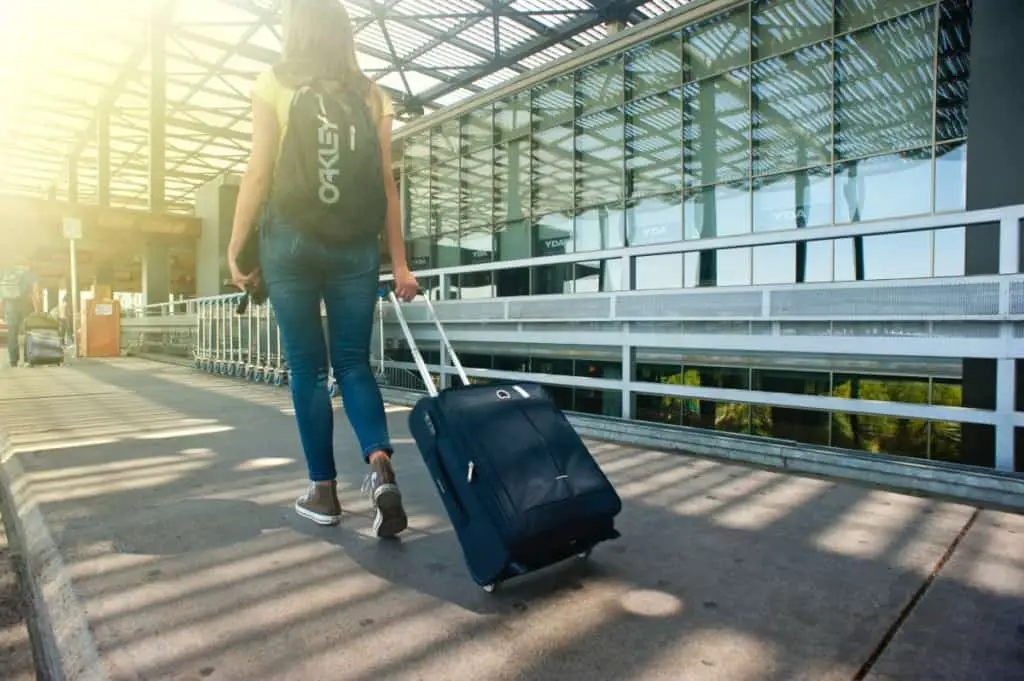Korea is gaining popularity worldwide for its music, films, dramas, and food. But what makes people decide to stay in Korea for longer is probably completely unrelated to those! Korea is even more appealing once you know its ins and outs. Its comfort in everyday life is one of the big factors of this appeal, and the reasons for this are probably unknown to many foreigners! Here is a list of 10 things you can only see in South Korea that make life in Korea so much easier!
- 10 Things You Can Only See in South Korea
- Bells on the table of restaurants
- Postpartum care center
- Korean Age
- Jeonse (전세)
- Seat for the pregnant woman in the subway
- Sun parasols at crosswalks, cold shelters on sidewalks
- Various hangover relievers
- Disposable folded paper cups near water coolers
- Food delivery to outdoor places like Hangang River Park
- Coin Noraebang (Karaoke)
10 Things You Can Only See in South Korea
Bells on the table of restaurants
[ Restaurant table bell in Korea ]
If you have lived in Korea for more than a couple of years, you know the pain of returning to your home country and reaching for the side of a restaurant table only to remember there is nothing there. Korea will do this to you! This convenient bell placed on the side of restaurants’ tables allows customers to call for waiters from a distance. The staff, knowing exactly what table number to go to, can easily come to take orders. I appreciate this feature more than the traditional waiving or calling out of a waiter, as it feels slightly less rude or overwhelming. Also, it is less confusing as the table number is communicated directly to waiters.
Postpartum care center
[ tvN drama Postpartum care center, 산후조리원 ]
Postpartum care centers, or “Sanhujori,” are a type of nursing facility that exists to care for women and infants during a certain period after childbirth. Postpartum care centers appeared in Korea in 1997, and over 75% of mothers use them for roughly 2 weeks. At an average cost is 2,200,000 won or 2000 USD (Postpartum Care Survey by the Ministry of Health and Welfare, 2018).
These establishments provide meals, medical care, and other services to facilitate daily life for women and infants after delivery. They also cover baby care (except for breastfeeding) to allow new mothers to rest, recover and learn the ropes. We can compare this system to private doulas in the West.
Because other countries have relatively privatized services around childbirth and postnatal care, Korea is the only place where this exact system exists, which makes it a great place to give birth. You can check out this famous YouTuber’s video on her experience in one of the centers in Seoul.
Korean Age
[ How to calculate Korean Age ]
This one has made some enemies among foreigners: “why am I older here?” is what we always ask. Korean Age is an informal way to calculate age where the year of birth is set as the first year, regardless of the date. The age is then counted by adding one year on the first day of the new year. If you are 25 everywhere else, you are 27 in Korea, and if you celebrate the New Year in the country, you automatically turn 28 as everybody gets one more year added.
Under the law, your “real” age will be recognized, but your Korean age will be mentioned more socially. Korea was the only country to still use this method of counting in the 21st century, but there are talks to abolish it in the near future!
Jeonse (전세)
[ Apartments in Seoul, South Korea ]
As we know, housing is not so cheap in Korea. Not just anyone can purchase a house or an apartment, which is why there is a system called Jeonse, which helps make things easier for tenants or aspiring buyers. Jeonse is a form of housing contract in which the borrower “rents” a house or apartment on the condition that they deposit lease money to the homeowner and get it back in full at the end of the contract period. During that period, the “tenant” does not actually pay monthly rent. You are probably wondering what the point is!
Well, Jeonse is a “win-win” sort of agreement. Indeed, depositing lease money as a lump sum is the same as lending the landlord money, without interest, and then living in their house for a certain period in return! The interest that the landlord would have had to pay the tenant balances out the rent the tenant was supposed to pay, which means an equal exchange. The landlord often makes a profit (by investing it elsewhere) and returns the original amount to the tenant at the end of the lease period. This is a unique system that works well in Korea.
Seat for the pregnant woman in the subway
[ Source: Seoul Government ]
While priority seats are nothing new outside of Korea, it should be recognized that their system for senior citizens and pregnant women seats are unmatched. As it is well-signaled and built in a different color with a clear indication of its purpose, the seat for the pregnant woman is well respected. It is not common to see anyone use it, even at peak hours. Additionally, pregnant women do not need to “show” to get priority. They often have a little pink tag on their purses that indicates that they are pregnant, which signals passengers to let them through.
Sun parasols at crosswalks, cold shelters on sidewalks
Korea has 4 beautiful, distinct seasons. However, their drawbacks are scorching hot summer sun and extremely low winter temperatures. Korea has developed solutions for each issue to comfort its inhabitants.
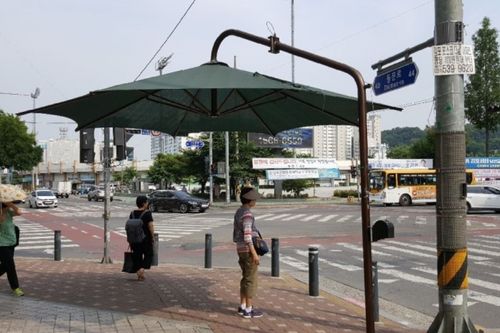
Sun parasols:
You may have seen these giant umbrellas when crossing streets in Korea. During the summer, Korea suffers scorching temperatures, and the parasols are to offer relief from the harsh sun rays when waiting to cross the street. The parasols, known to be present only in Korea, are as appreciated as they are simple! During other seasons, they are simply closed and stowed away.
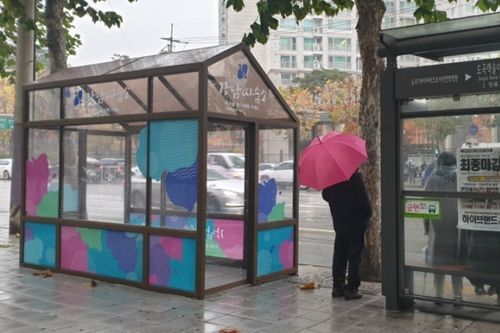
Cold shelters:
Winter can be quite extreme in Korea. I can vouch for it as I have witnessed it reaching temperatures of -16° Celsius in 2018. Because of this, simple actions such as waiting for your bus can become difficult, especially if you leave the house slightly unprepared. To protect citizens from the cold waves sweeping the streets, cold shelters called Igloos have been installed on sidewalks. They block the wind and temporarily shelter people waiting for buses to arrive.
Various hangover relievers
Source: The Korea Herald
Hangover relievers are an enormous success in Korea. Sold at convenience stores as they are not considered specialized drugs but general foods, they come in pills or fruit-flavored drinks. Consumed before or after a night of drinking, they prevent the long agony that is the day after by reducing the absorption of alcohol into the body. No more nausea or headaches!
With Korea’s heavy drinking culture, these products are much appreciated. Of course, it is recommended to drink moderately. Hangover relievers reduce sensitivity to alcohol and its after-effects so that you don’t feel discomfort the following day. But overdrinking still has consequences in the long run.
Disposable folded paper cups near water coolers
[ Disposable folded paper cups near water coolers ]
You may have seen these at the gym, work, or office with water coolers. These disposable cups are popular in Korea and have replaced disposable plastic cups. Their purpose is obvious: while disposable cups are more likely to be used once and thrown away, it is much better to use small paper cups that are easily recyclable. They are also cheaper to make, and their price is much lower than traditional plastic cups. A win for everyone!
Food delivery to outdoor places like Hangang River Park
Source: Visit Seoul
One of the charms of living in Korea is its delivery system. Fast and affordable, it gives us access to all the delicious foods our heart desires in the comfort of our homes…or not? Yes, delivery is available not only at our doorsteps but also outside. If you know about spending the day at Han River, you know that countless companies leave their flyers for customers to order by phone and be served right where they are sitting.
You can also use classic delivery apps such as Yogiyo to order your food online and agree on a meeting spot with the driver to receive your food! It is that simple and one of the pleasures that would be difficult to find anywhere else!
Coin Noraebang (Karaoke)
Source: The Korea Times
One thing that drastically changed after I moved to Korea was my complete disdain towards Karaoke and Karaoke culture. Back home, Karaoke night is considered old and uncool. Even worse, it consists of a single screen and microphone in a restaurant or lounge, where one has to sing in front of all other customers! After arriving in Korea, I discovered Karaoke rooms, where you could just have fun with a small group of people in a private room: much better, but the prices were by the hour and not always worth it.
This brings us to Coin Karaokes: the smaller, privatized room where you can stay for as long as you want and pay by the song. Sign me up! These establishments provide coin-operated karaoke machines and allow small groups, couples, or even individuals to sing their favorite songs, but only for as long as they want.
You can enter or leave at any time and only pay for the songs you sing. It is not surprising that Coin Karaoke is extremely popular and spread all over Korea and now beyond.
Korea is always a wonder to visit for the first time. And even after some years, it surprises us with innovations that help improve our quality of life. I hope this list gives you an insight into life in Korea and allows you to enjoy it to the fullest!
You may also like:
- Most Useful 10 Websites For Expats in Korea
- The Ultimate FAQs to Visit & Stay in South Korea
- Top 7 Korean Ramen Shops to Visit
- Top 10 Pet-Friendly Hotels in Seoul, South Korea
- Best Places To Buy Electronics in Seoul
IVK’s Top Picks – Day Tours, Tickets, and Travel Activities
Seasonal Picks!😍


